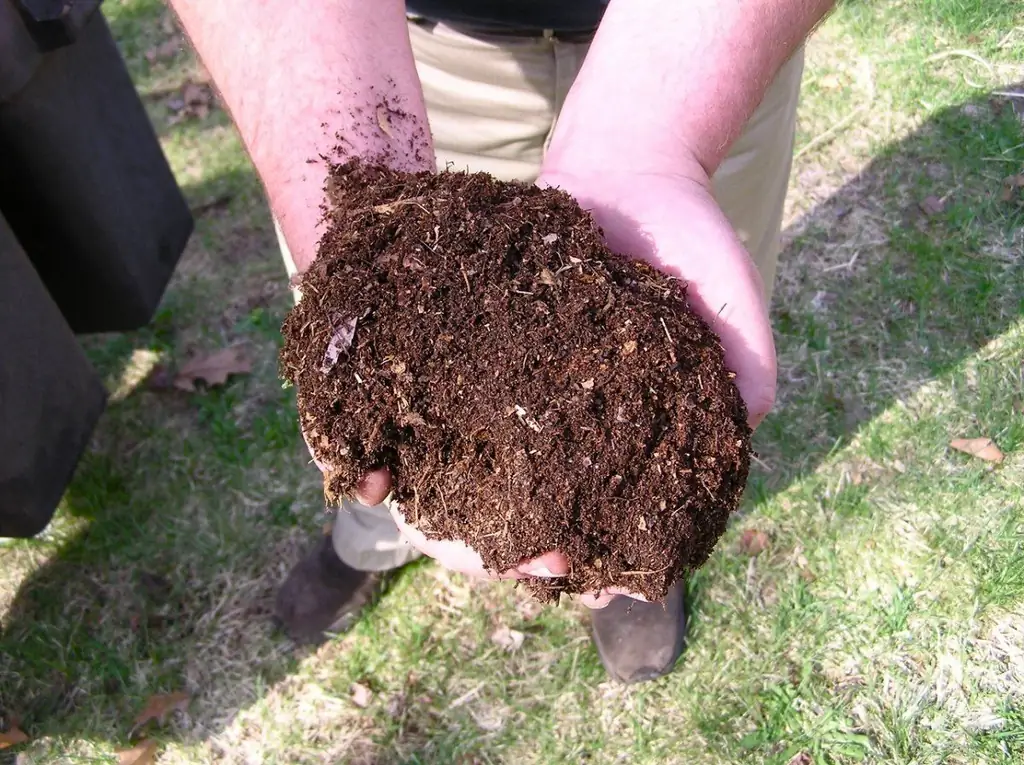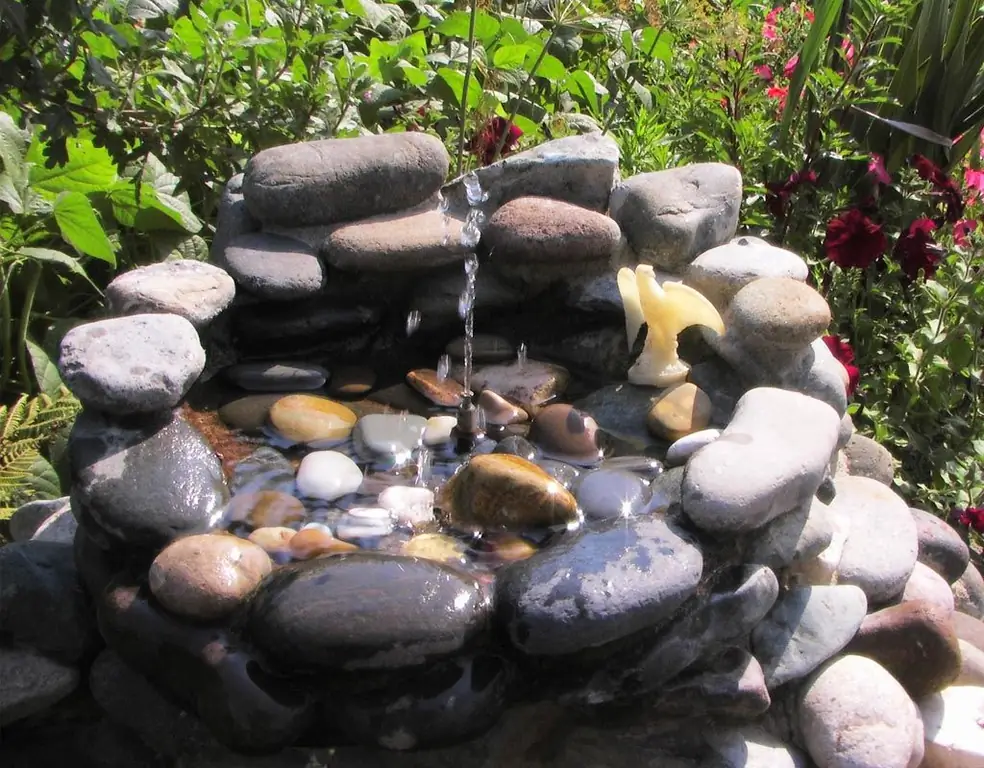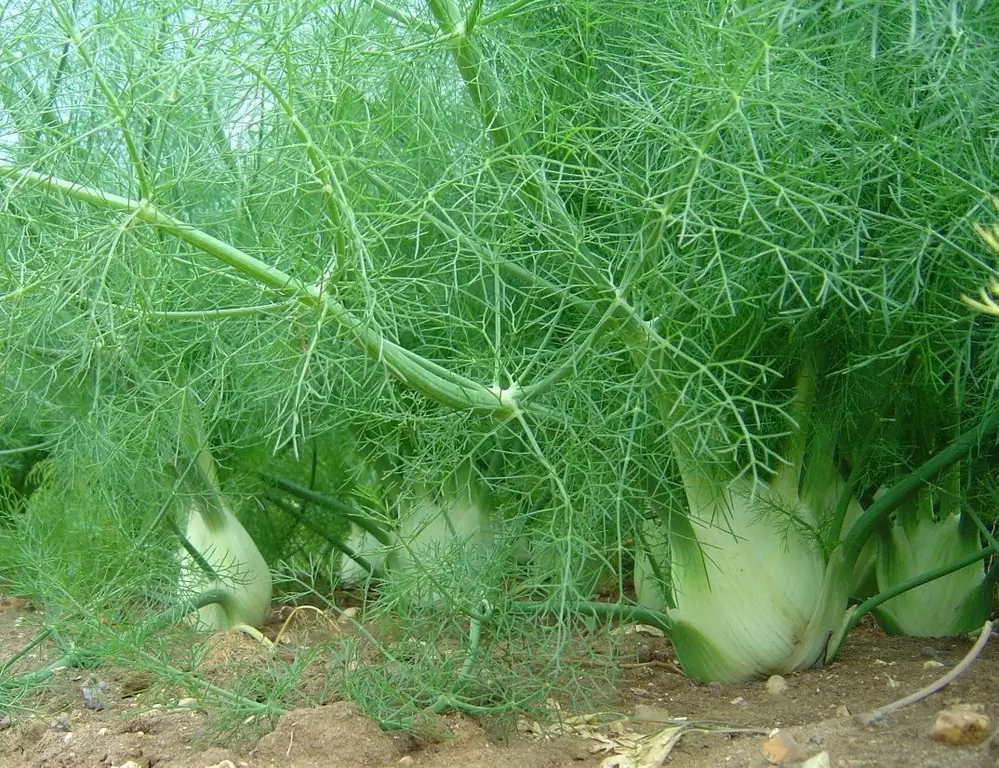
Table of contents:
- Author Bailey Albertson [email protected].
- Public 2023-12-17 12:53.
- Last modified 2025-01-23 12:41.
Organic fertilizers in your garden. Part 1

Since ancient times, organic matter has been used to increase soil fertility. These fertilizers are popular even now: compost, green manure and manure are much cheaper than chemistry, and if you constantly work in the garden and vegetable garden, preferring "waste-free production", then they will be completely free.
Organic fertilizers, especially manure, contain almost all the nutrients necessary for the soil. Organic matter is rich in micro and macro elements, it improves the physical properties of the soil, thereby increasing the ability to aerate and absorb moisture.
In this article, we will look at several types of organic fertilizers, the features of their use and the effect on fruit and vegetable crops.
Content
- 1 Manure
- 2 Conservation of manure
- 3 Mullein
- 4 Bird droppings
- 5 Fertilizers of plant origin
- 6 Using grass for fertilization
- 7 Video about the use of organic fertilizers in the garden and vegetable garden
Manure
This is perhaps the most common and most commonly used organic type fertilizer. The quality of manure can be different, and depends on factors such as the type of animal, the timing and methods of storage, the feed used. Accordingly, horse, pork, sheep and cow dung are not the same in their value. For example, manure from a cow or pig is more saturated with moisture and less nitrogen than feces from horses or sheep.

People call sheep and horse manure hot because it decomposes quickly and at the same time releases heat in large quantities. In the first year, when such manure is applied, its nutrients work more fully than that of cattle manure. The percentage of manure use in soil by type is as follows:
- Sheep - 34%;
- Horse - 20-25%;
- Cow - 18%;
- Pork - 10%.
Pig and cow manure is called cold because it decomposes slowly and heats up little.
The quality of manure (the degree of its decomposition) directly affects the structure of the soil and the accumulation of nitrogen in it. There are 4 degrees of decomposition:
- Fresh manure, at a weak stage of decomposition, with a slight change in color and strength of the straw. When rinsing, the water turns reddish or green.
- Semi-overripe - the straw loses its strength, becomes loose and becomes brown. The water turns yellow when washed. Manure at this stage loses 15-30% of its original weight.
- Rotten manure looks like a smeared black mass. Straw in the last stage of decomposition. At this stage, weight loss relative to the initial one reaches 50%.
- Humus is an earthy mass of loose consistency. Weight loss from the original - about 75%.
Manure conservation
The higher the stage of decomposition of manure, the more the content of useful active substances in it increases in percentage. Accordingly, humus is the richest in nutrients in comparison with other species; with slow decomposition, it gradually gives up the accumulated nitrogen to the soil.
Sometimes manure is brought to personal plots in summer. But since during this time of the year it is not introduced into the soil, it is necessary to ensure its safety until autumn. To ensure that nutrients are not lost during storage, use manure for composting, adding phosphorus and mineral fertilizers to the mass.

The compost preparation technology is as follows: pour a 5-6 cm layer of earth on a prepared flat area, then a 10-15 cm layer of manure. That is, the ratio should be as follows: 4-5 parts of manure per 1 part of the land. To improve the beneficial qualities, add 1-2% superphosphate
Thus, alternating the soil with manure in layers, a pile up to 1.5 m high is poured. The finished pile is covered from above with a layer of earth of 8-10 cm. After 1.5-2 months, thoroughly mix the contents of the pile. Thus, nitrogen is perfectly preserved in the mass.
Mullein
Most often it is used to feed plants. Here is the way to prepare it: you should take a tub of large capacity and fill 1/3 with manure, then fill it with water to the top and mix thoroughly. After that, the tub is left for 1-2 weeks. During this time, the mullein wanders, and substances beneficial to the soil are activated.

Before adding the mullein solution to the top dressing, it should be re-diluted with water 2-4 times. That is, there will be 3-4 buckets of water per bucket of fermented mullein. The amount depends on the moisture content of the soil: the drier the soil in your area, the more water will be needed so that the beds, in addition to fertilization, receive additional moisture.
If the soil moisture is high enough, then you can make a strong talker solution, diluting it no more than 2 times. For 1 sq. you will need to enter 1 bucket of solution, a stronger solution is applied in smaller quantities. That is, the calculation should be as follows: 2-3 kg of mullein excluding water for dilution per 1 sq. soil.
Bird droppings
This fertilizer is concentrated and, if used incorrectly, can burn the root system of the plant. But on the other hand, it contains much more nutrients than manure. For example, chicken manure is 3 times richer than manure in terms of the content of elements useful for plants.
Nitrogen contained in poultry manure tends to evaporate quickly. In order to minimize these losses, during storage the manure is subjected to sprinkling with earth or peat.

As the main fertilizer, poultry manure is applied to the soil in the spring, before planting vegetable crops. But much more often it is used for feeding. To do this, 2-3 kg of droppings are given on a bucket of water, and when it gets wet enough to freely disperse to a uniform mass, the solution is introduced into the soil, preventing fermentation.
It should be noted that the dry mass of poultry droppings should be diluted with water 20 times, and fresh - 10 times. Fertilizer is not subject to long-term storage. It should be added immediately after production, since the useful nitrogen will evaporate during the fermentation process, as well as the amount of useful elements will decrease.
You can notice the lack of nitrogen for the development of plants in the spring-summer period: young leaves on the shoots become pale green. In this case, the introduction of about 1 liter of solution for vegetables will help you, or dry litter for digging at the rate of 0.5 kg per 1 sq. soil.
Fertilizers of plant origin
These include sapropel, straw, sawdust and grass. Each of them benefits the soil, but requires care.
Sapropel is called pond or lake silt. It is the most natural natural, environmentally friendly organic matter. Sapropel is rich in lime (content from 3 to 50%), trace elements, available phosphates, natural antibiotics, hormones and growth stimulants.
The color of sapropel can be light gray, bluish, dark gray and even almost black, depending on the flora and fauna of the reservoir. Silt is able to increase soil fertility on the site for several years. However, light and grayish saorel must be ventilated beforehand. That is, it should first be scattered over the site, and after some time it should be dug up for embedding in the soil, combining with other fertilizers.
In order to use straw as fertilizer, it must be pre-crushed by adding slurry or mineral nitrogen, at the rate of 100 kg of straw / 1 kg of nitrogen and fertilizers. Straw is most effectively used by gardeners and gardeners in composting.

Wood sawdust is a hard-to-mineralizable production waste. When using them in their pure form, the calculation for the introduction of the material is 20-30 kg per 100 sq. soil with the addition of slurry or liquid manure (from 40 to 60 kg per 100 sq. m.). Application and plowing are carried out in the autumn, after harvesting from the site.
It is much more effective to use sawdust as bedding for animals, and then keep the manure in the pit for 4-6 months. The fully matured mass is applied in doses equivalent to the amount of bedding manure.
Fresh sawdust is poor in nutrient content, but their introduction into the soil will reduce the transpiration of water and exclude the formation of a crust. Sawdust is especially good for improving the physical properties of soils with a high clay content. The earth acquires a friable consistency, which increases the absorption of moisture.
Sawdust should be pre-enriched with nitrogen: a glass of urea is dissolved in a bucket of hot water, and this mixture is added to 3 buckets of sawdust. In the spring, sawdust is scattered around the planted plants. This will help reduce the growth of weeds.
Using grass for fertilization
As you know, fertilizers on the market and in the store are not cheap, their procurement from improvised means is a rather painstaking task. Not always the same manure or poultry droppings are available to every gardener. It turns out that weeds can be easily used to obtain fertilizers that are not inferior in quality to organic matter and mineral fertilizers.
In order to process the herb into a useful substance, do the following: take a large container with a volume of 200 liters and place it in a sunny, well-lit place. Chop freshly harvested weeds and fill the barrel 2/3 with this mass. In good, sunny weather, the contents of the container will begin to ferment after 10-12 days. This can be determined by the appearance of foam on the surface. Approximately 3 days after the start of fermentation, the solution can be used as fertilizer.

Remove the grass from the container, squeeze it thoroughly. Pour up to 8 liters of ash infusion into the resulting liquid (10-15 glasses of ash, carefully sifted for 8 liters of boiling water). The addition of carbamide (urea) is allowed, about 15 tablespoons for the entire amount of infusion.
Stir the contents of the barrel before use and dilute it at the rate of 1 part solution to 10 parts water. The finished fertilizer is perfect for feeding fruit trees and berry bushes. Watering rates are:
- 1 fruiting tree up to 10 years old - 2-3 buckets;
- 1 fruitful tree up to 15 years old - 3-4 buckets;
- 1 berry bush, depending on size and age - 1-2 buckets.
For more effective penetration of the solution into the soil, pour it into previously prepared punctures 40-50 cm deep in the near-trunk circles.
It is recommended to fertilize trees and bushes in a cool time - in the evening or in a cloudy season. The best period for this is June and July. During these two months, feed three times, 3-6 days in a row.
Video about the use of organic fertilizers in the garden and vegetable garden
As you can see, with proper attention and diligence, you can independently provide your crop with sufficient feeding. These are not all the organic fertilizers recommended for use in the garden and in the beds. In the next article, we will tell you about the qualities of peat and how to make prefabricated composts. We wish you a good harvest and easy work!
Recommended:
Making Garden Paths With Your Own Hands - Tips + Video

Practical advice on the construction of paths in the garden. Materials used, recommendations
Description Of Organic Fertilizers And Their Use (with Video)

Types of organic fertilizers, practical recommendations for the production and use of compost and other fertilizers
How To Make A Garden Fountain With Your Own Hands In The Country: Photo, Video, Step By Step Instructions

A step-by-step description of the process of building and installing a fountain from improvised means in the country with your own hands Required materials and tools
Garden Lilies - Planting And Care, Photo And Video (oriental, White, Tubular)

Features of the species and varieties of garden lilies. Tips for planting lily bulbs. advice on growing and care
Growing Fennel From Seeds (including Vegetable Seeds) At Home And In The Garden + Photo And Video

Practical tips for growing fennel from seed. Fennel species, varieties suitable for growing in the middle lane
